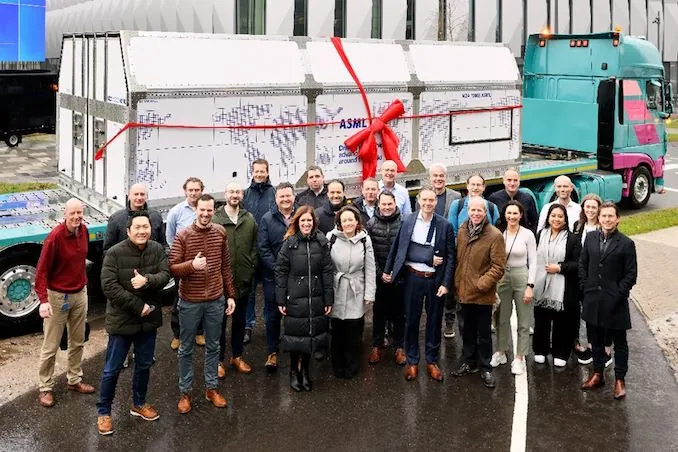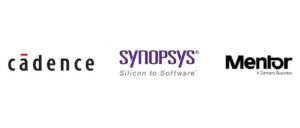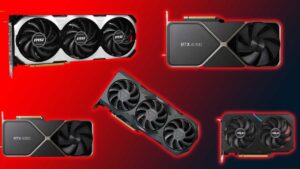Introduction:
In the relentless pursuit of smaller, faster, and more efficient microchips, the semiconductor industry has reached a monumental milestone with the advent of High NA EUV lithography.
However, this groundbreaking technology promises to revolutionize chip manufacturing, enabling chipmakers to push the boundaries of what’s possible in terms of transistor density, functionality, and energy efficiency.
Here are five key insights into the transformative potential of High NA EUV lithography:
Follow us on LinkedIn for everything around Semiconductors & AI
1. Unprecedented Resolution:
At the heart of High NA EUV lithography lies a significant leap in resolution capability. By elevating the numerical aperture (NA) from 0.33 in previous EUV systems to 0.55 in High NA systems, chipmakers can achieve remarkable precision in printing tiny features on silicon wafers.
This enhancement allows for a critical dimension (CD) of 8 nm, enabling the production of transistors that are 1.7 times smaller than those produced by earlier EUV systems.
Consequently, this translates into transistor densities that are nearly three times higher, ushering in a new era of microchip miniaturization and performance.
2. Anamorphic Optics: Overcoming Reflection Challenges:
To achieve the increased NA while mitigating reflection issues, High NA EUV lithography employs an ingenious solution: anamorphic optics.
Unlike traditional lithography systems that uniformly shrink the pattern being printed, High NA systems demagnify the pattern by 4x in one direction and 8x in the other.
This asymmetrical approach reduces the angle at which light hits the reticle, preserving its reflectivity and ensuring accurate pattern transfer to the wafer.
By maintaining compatibility with traditionally sized reticles, this innovation minimizes disruptions to the semiconductor ecosystem, streamlining the adoption of High NA technology.
3. Enhanced Productivity Through Faster Stages:
Despite the need for twice as many exposures per wafer due to the smaller exposure fields of High NA systems, ASML has risen to the challenge by engineering faster wafer and reticle stages.
The TWINSCAN EXE:5000 boasts a wafer stage that accelerates at 8g, twice as fast as its predecessors, while the reticle stage accelerates an impressive 32g.
Moreover,this remarkable acceleration translates into a significant increase in throughput, with the EXE:5000 capable of printing over 185 wafers per hour.
Such enhanced productivity not only accelerates the pace of chip manufacturing but also ensures the economic viability of integrating High NA technology into chip fabs.
4. Simplified Manufacturing for Cost Efficiency:
High NA EUV lithography offers more than just unparalleled resolution; it also simplifies the manufacturing process for chipmakers, leading to increased cost efficiency.
With a CD of 8 nm, the EXE:5000 enables chipmakers to streamline their production processes, reducing production time and minimizing the risk of introducing defects.
By eliminating the need for complex workarounds to overcome resolution limitations, High NA technology empowers chipmakers to achieve optimal yields and maximize the cost-effectiveness of advanced microchip production.
Read More: What are the Various Types of Semiconductor Packaging
5. Driving Innovation and Empowering the Future:
The impact of High NA EUV lithography extends far beyond the realm of chip manufacturing; it paves the way for groundbreaking advancements in technology and fuels innovation across industries.
From 2 nm node Logic chips to memory chips with unparalleled transistor density, High NA systems will underpin the development of next-generation electronic devices.
Whether it’s robotics, artificial intelligence, or the internet of things, the tiny features printed by High NA EUV lithography will serve as the foundation for transformative technologies that shape the future.
Conclusion:
High NA EUV lithography represents a monumental leap forward in chip manufacturing, unlocking unprecedented levels of resolution, productivity, and cost efficiency.
As chipmakers harness the power of High NA technology to push the boundaries of innovation, the possibilities for the future of technology are limitless.
With its ability to deliver smaller, more powerful, and energy-efficient microchips, High NA EUV lithography is poised to redefine what’s possible in the digital age and propel us into a new era of technological advancement.



